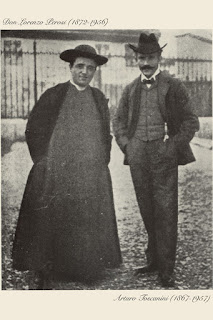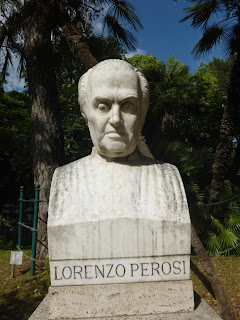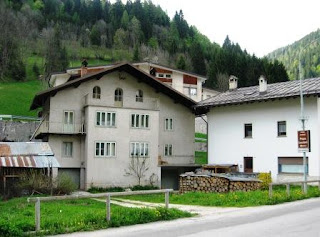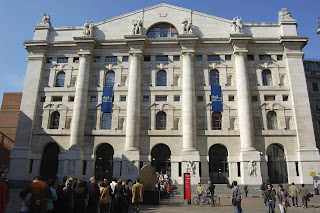Failed banker ordered murder of investigating lawyer
 |
| Michele Sindona - banker whose empire collapsed after failure of Franklin National Bank in America |
His death, attributed to cyanide poisoning, came four days after he had been sentenced to life imprisonment for ordering the killing of a lawyer investigating the collapse of his $450 million financial empire.
His own lawyer claimed he had been murdered but although it was never established beyond doubt, the circumstances of his death, caused by drinking coffee laced with the poison at breakfast in Voghera's maximum-security prison, pointed towards suicide.
During his chequered career, which also saw him sentenced to 25 years' jail in America for fraud following the failure of the Franklin National Bank on Long Island, Sindona had links with Mafia bosses in Sicily and New York, with the illegal Propaganda Due masonic lodge and with the controversial head of the Vatican Bank, the American Archbishop, Paul Marcinkus.
His close ties with another Vatican Bank client, Roberto Calvi, gave rise to theories that both he and Calvi, whose body was found hanging from the underside of Blackfriars Bridge in London in 1980 following the collapse of the Banco Ambrosiano, of which he was president, were killed because they knew too much.
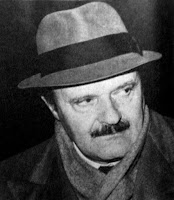 |
| Roberto Calvi |
He also enjoyed a friendship with the former American president, Richard Nixon. Ironically, through Italy's giant construction conglomerate, Società Generale Immobiliare, Sindona was the part-owner of the Watergate Building in Washington, which housed the Democratic National Committee office, the bugging of which led to Nixon's resignation and impeachment.
Born in Patti, a town on the northern coast of Sicily some 76km (47 miles) from Messina, the son of a florist, Sindona went to a Jesuit school, where he showed an aptitude for maths and economics. He attended Messina University, where he graduated in law in 1942 and completed a thesis on The Prince, Niccolò Machiavelli's 16th century treatise on political philosophy.
He moved to Milan in 1946 at the age of 26 and opened a tax consultancy business, soon gaining a reputation for his knowledge of tax havens and the export of capital. He began to build capital and within 15 years had amassed a fortune through his shrewd investments, mainly in the banking sector.
He acquired the Banca Unione di Vaticano with the aid of London's Hambros Bank, then the Banca Privata Italiana. In due course, he added controlling interests in the Wolff Bank of West Germany, the Finabank and Amincorn Banks of Switzerland, the Banca di Messina in his native Sicily and finally the Franklin National Bank.
 |
| Carlo Gambino, the New York Mafia boss |
At the same time, though, as investigations later revealed, Sindona had become involved with the Cosa Nostra in Sicily and the Gambino crime family in New York, largely in the area of money laundering, and it transpired that a good deal of the capital he was investing to build his empire came from the proceeds of the Gambino family's heroin trafficking.
All of this went on unnoticed, however, until a sudden stock market crash in April 1974 left the Franklin National, the 20th largest bank in the United States, badly exposed. In what became known as Il Crack Sindona, Franklin National's profits plunged by 98 per cent compared with the previous year, Sindona lost $40 million dollars and the domino effect brought down most of the other banks he had acquired.
Under pressure from the Gambinos to recover their money, Sindona promised to inject new capital up to the sum of $50 million but by October of that year the Franklin Bank had been declared insolvent and Sindona was being investigated for fraud.
 |
| Giorgio Ambrosoli - Sindona was jailed for life for arranging the murder of the lawyer appointed to look into his affairs |
Sindona urged Licio Gelli, the self-appointed 'grand master' of Propaganda Due, to use his influence and contacts to call off the process, but to no avail. Sindona is said also to have asked Roberto Calvi to provide the capital to rebuild his empire and, when rebuffed, began to leak information about Calvi's activities to a journalist, whose investigations were central to the ultimate collapse of Banco Ambrosiano.
Meanwhile, it was not long before Ambrosoli was receiving telephone calls offering bribes to facilitate the approval of documents proving that Sindona had acted in good faith, which would have exempted him from criminal proceedings and required the Italian government to use public money to bail out his ailing empire.
Ambrosoli refused all offers, however, and paid the price. On July 12, 1979, arriving home from his office in Milan, he was walking between his car and the door of his apartment when he was approached by three men, one of whom shot him five times in the chest.
Investigations concluded that the killer was an Italian-American, William Arico, who had been commissioned on behalf of Sindona by Roberto Venetucci, a heroin trafficker.
The following month, while awaiting trial in New York over the Franklin National Bank collapse, Sindona defied orders restricting his movement by returning to Sicily, where he threatened Enrico Cuccia, the president of Mediobanca and an opponent of any rescue plan for Sindona's empire, and asked Licio Gelli to put pressure on Giulio Andreotti to intervene, threatening to name five prominent individuals who had profited from illegal currency deals.
None of this worked, however, and on his return to the United States he gave himself up. After his conviction for fraud relating to the Franklin Bank collapse, he was extradited to Italy and found guilty of ordering the murder of Ambrosoli.
In the days before his death, he repeatedly spoke about his fears of being poisoned. On the day of his poisoning, prison guards noted that he took his coffee from his cell into the bathroom, which he had not done before, and emerged gasping for breath and claiming he had been poisoned. This led investigators to conclude that, on the balance of probability, he had taken his own life.
 |
| Patti, the town in Sicily where Sindona was born |
Situated close to the ruins of the Greek city of Tyndaris (Tindari), the town of Patti, birthplace of Michele Sindona, has an old town characterized by narrow streets, stairways and squares, with the different styles that reflect the area's diverse cultural heritage, having been a settlement for Greek, Roman, Arab, Norman and Spanish people. There is a 12th-century cathedral that underwent reconstruction in the 15th century and again after the earthquake of 1693.
Hotels in Patti by Booking.com
Travel tip:
Voghera, which has a castle erected by the Visconti family between 1335 and 1372 and an 11th century cathedral later remodelled in Baroque style, is famous for the term 'Casalinga di Voghera' - Voghera housewife - which is often used in the media and political discourse to refer to the average Italian citizen - not particularly well educated or sophisticated but working hard and striving through self-sacrifice to raise a family in the best way possible. In England, an equivalent but now somewhat archaic phrase is 'the man on the Clapham omnibus', which was once regularly used in courtrooms to represent someone whose hypothetical opinion might determine whether an action was or was not reasonable.
 |
| The remodelled cathedral in the town of Voghera in Lombardy |
Voghera, which has a castle erected by the Visconti family between 1335 and 1372 and an 11th century cathedral later remodelled in Baroque style, is famous for the term 'Casalinga di Voghera' - Voghera housewife - which is often used in the media and political discourse to refer to the average Italian citizen - not particularly well educated or sophisticated but working hard and striving through self-sacrifice to raise a family in the best way possible. In England, an equivalent but now somewhat archaic phrase is 'the man on the Clapham omnibus', which was once regularly used in courtrooms to represent someone whose hypothetical opinion might determine whether an action was or was not reasonable.

